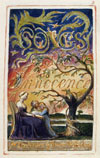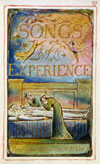GAME LOG
Already I'm cheating at the game. I just spent two hours re-working my first move because there was much there that seemed muddled, and some other things I thought I could mine for future moves. I'm making up the rules as I go along. Is that allowed? Can you play a game without the rules up front? How can you proceed without procedure, and how can you have a procedure without rules? I go leafing through books to find my answer. In a game of critical interpretation, are other books my rules? Is the "discourse field" my rule book? One of my books—one which I'm actually reading for another project—says: "All play has its rules. They determine what 'holds' in the temporary world circumscribed by play. The rules of a game are absolutely binding and allow no doubt" and "the player who trespasses against the rules or ignores them is a 'spoilsport'" (Homo Ludens, by Johan Huizinga, 11). Another one of my rulebooks (Hamlet on the Holodeck, by Janet Murray)says of computers, as they relate to games: "the computer is not fundamentally a wire or a pathway but an engine. It was designed not to carry static information but to embody complex, contingent behaviors. To be a [game programmer] is to think in terms of algorithms and heuristics, that is, to be constantly identifying the exact or general rules of behavior that describe any process" (72). A book is also an engine, also can be a game, also has algorithms. What is our algorithm here? And does an algorithm predict or proscribe behavior in the gameworld? This seems to me a vital distinction. Pertinent questions as we consider Blake's Songs as a game. Time to look at the image/texts in play. First note: in choosing the title pages, I am following Blake's order. So I am following his procedure, his rules. This will probably not hold in the playing of my game. Why did I choose them? Because that's how Blake did it, and I am following his authority? Or because of the habit of reading codex books? Or because I had an agenda? Probably all of the three, but most definitely the third. My agenda is to talk about paratext, which I wanted to do in my previous move but ran out of space. These are my two themes of late: gaming and paratext. So I suppose it's logical I would want to say something about the role of paratext in games of a literary kind—as well as want to "game" the concept of paratext, expecially Blake's unique paratext. For those just tuning in, paratext consists of the elements of a book (and a game? We'll see) that bracket the text proper: title page, table of contents, intertitles, notes, index, etc. Gerard Genette is something of the expert here. He writes, "the paratext is what enables a text to become a book and to be offered as such to its readers and, more generally, to the public. More than a boundary or a sealed border, the paratext is, rather, a threshold" (2). It is important to note that such thresholds appear variously in the book. These entrances to the meaning of the text could be at the beginning (title page), alongside (footnotes), or at the end (index). And in that they affect the presentation they also affect the meaning of a work. Genette quotes Philippe Lejeune to that effect: paratext is "a fringe of the printed text which in reality controls one's whole reading of the text." Genette closely ties this to the author as procedural authority—Foucault's "author-function" though Genette seems oblivious to that concept, which I assume is willful in some way. So the paratext offers portals into the meaning of the work. But how does paratext function in interactive, virtual narratives, such as we encounter through the Contraries Machine? Certainly its functioning is different. If our paratextual portals can be everywhere in the work, paratext is certainly possible in a work with an infinite number of access points, such as hypertext offers. Could every page be paratext into the larger meaning of the work? Yes, but could it control the discourse of the work? I wonder. So what, finally, can I say about the respective title pages to The Songs of Innocence and The Songs of Experience, particularly in terms of paratext—in their framing of meaning? We can see how it works immediately with the Innocence title page: it forecasts many of the themes we'll see deeper into the book. There is much foliage spreading without check across the page. We see the fecundity of Innocence. We also see how the image and words meld into each other, text becoming greenery and vice versa, facilitating a double-vision become single, in our interaction with the plate. We also see how Innocence can be renewed: the blasted tree is sprouting green again. This renewal implies Experience, so here we have a portal to that book, or a portal between the two books. All this we will see again in the book. There are also various golden figures flitting about the text-forms. So we are again—always—entertaining angels, oftentimes unaware. Keynes points out the piper figure in the bowl of the bottom of the "I" in "Innocence." (Keynes commentary is keyed to plates rather than page numbers. See the commentary to the Innocence title page). He suggests, because he is wearing the type of big hat favored by Blake, that this piper is meant to represent Blake, but it is always dangerous to identify any of his figures—shepherd, piper, bard—with Blake and I am hesitant to do so here. There is also a nurse here, another common figure in these two books. Also children, who throng about Innocence, and are clearly representative of that world for Blake—though they appear in Experience as well, and not just as hapless figures (Use the Machine to view "Holy Thursday" and "The Chimney Sweeper") but do some frolicking there as well (See second plate to "The Little Girl Found," Plate 36). What are the children doing? They're peering into a book, no doubt a book for children, the kind a nurse would read to her charges. Maybe Blake's book? Though that might make Blake more pre-pomo than he (or I) would be comfortable with. This idyllic scene of reading lulls us into a comfortable expectation that we are about to read is something strictly for children, presenting quaint representations of childhood innocence. We will shortly find this is not so, and perhaps this is why Blake depicts it this way at the start. Now the title page from Experience. A very different scene, to say the least. We have moved from the lovely rural scene of Innocence into a kind of mausoleum. So, from outside to inside. So here we seem to have a contrary relationship established. We'll see if it plays out in other plate combinations. In Experience, the fecund green foliage we saw in Innocence has largely dried up. But not completely: their are some new sprouts, coming from the letters, again suggesting renewal—and a portal point between the two virtual worlds of Innocence and Experience. Innocence has "dried up" in a more dramatic way in the depiction of the children. In Experience, the two children—slightly older versions of the same children in Innocence perhaps—are grieving the death of both their parents. In Innocence they were complacently frolicking outdoors, listening as their nurse read them nursery rhymes and fairy tales, and now they come in to find their parents dead, and the nurse gone. This is truly a disaster for the children, more dire than the reader—at least those from the industrialized West—might encounter today. In Blake's time, becoming an orphan, being thrust upon the charity of others—usually other family members or the church; there were precious few other resources—was nothing but a disaster; it generally meant desperate poverty. Other Romantic-era works (Cf. Caleb Williams by William Godwin, Frankenstein by Mary Shelley) have shown the true, disastrous, radically disempowered, nature of orphanhood. Innocence could never survive such a disaster. There is no better entrance, or portal, to Experience than the child's experience of his/her parents' death. What do we make of the dancing figures above the tableux of death and bereavement? Are they mere ornaments? Nothing is "mere" in Blake. Are they meant to be a mockery of the scene below—a callous world dancing as parents die, leaving children who are suddenly cast into poverty? Possibly. Perhaps a more charitable explanation would be that they represent the world of Innocence, which continues, elsewhere, though these children have been cast out. Again, the parallel universes of Innocence and Experience co-existing within a larger meta-universe, without any traffic between them until the experience of visionary consciousness gives us the portals. I thought I might say other things about paratext but I think my discussion so far has showed clearly the functioning of paratext in Blake's text. They reflect thematic content, as well as visual and textual tropes. They are portals, thresholds upon, two distinct, though parallel, universes. So we how paratext functions in a work that is not just verbal or visual, but both at the same time. We also glimpse that the ride Blake is going to give us may prove to be bumpy: not a boat ride along a placid stream, past lovely pastoral scenes, but more like a roller coaster through the dark mountain, with garish faces appearing suddenly out of the world of shadows. Until we come out the other side and see, for good or ill, the world has not changed, though our perception of it might have. |
|||||||

